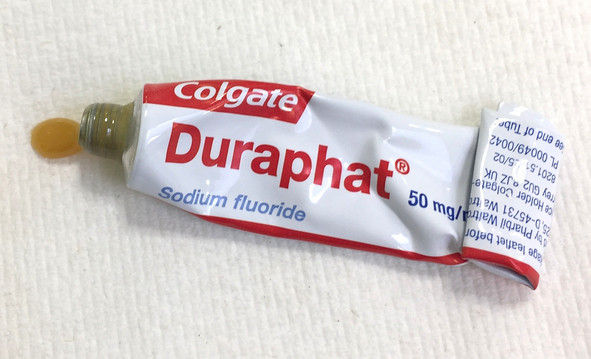Fluoride therapy
Fluoride therapy involves using fluoride for medical purposes, especially to prevent tooth decay. It's recommended for children over six months old in areas with low fluoride in drinking water. Fluoride is typically consumed via liquids, pills, or pastes. Besides dental benefits, fluoride has been explored for treating bone diseases like postmenopausal osteoporosis, though it's not deemed effective for preventing fractures despite increasing bone density.

Fluoride's dental benefits are well-documented; fluoride toothpaste, for example, significantly reduces the risk of cavities in children and adolescents. Systemic fluoride therapy, like water and milk fluoridation, effectively prevents dental cavities. Fluoride strengthens developing primary teeth, making them more resistant to cavities, though it also increases the risk of dental fluorosis, a condition causing white marks on teeth.
The history of fluoride usage in dentistry dates back to the 1940s, with fluoride now included in the World Health Organization's List of Essential Medicines. Its application has varied forms, including water fluoridation, which began in the United States in the mid-20th century and remains a cost-effective preventive measure against tooth decay. Additionally, fluoride is present in many toothpastes and mouth rinses, providing daily protection against cavities.
Apart from water fluoridation and toothpaste, fluoride therapy includes the use of mouth rinses, gels, foams, and varnishes. These treatments provide topical fluoride application, contributing to the remineralization of enamel and prevention of tooth decay. Fluoride varnish, for example, is particularly effective in reducing initial dental decay lesions in both primary and permanent teeth, offering a practical and efficient method for fluoride delivery.
While fluoride therapy is a cornerstone of dental health, its administration and the concentrations used must be carefully managed to avoid the risk of dental fluorosis, particularly in children. Thus, the integration of fluoride into dental care routines, through various available products and treatments, is a key strategy in maintaining oral health and preventing dental diseases.
EAPD Fluoride Guidelines (2019 revision)
EAPD Fluoride Guidelines (2009 revision)
Original post here: Fluoride therapy
Comments
Post a Comment